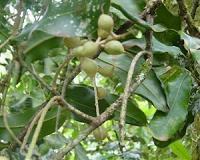 |
Riverside CA (SPX) Aug 27, 2010 Drought-tolerant crops have moved closer to becoming reality. A collaborative team of scientists has made a significant advance on the discovery last year by the University of California, Riverside's Sean Cutler of pyrabactin, a synthetic chemical that mimics a naturally produced stress hormone in plants to help them cope with drought conditions. Led by researchers at The Medical College of Wisconsin, the scientists report in Nature Structural and Molecular Biology that by understanding how pyrabactin works, other more effective chemicals for bringing drought-resistance to plants can be developed more readily.
Abscisic acid versus pyrabactin Pyrabactin, on the other hand, is relatively inexpensive, easy to make, and not sensitive to light. But its drawback is that, unlike ABA, it does not turn on all the "receptors" in the plant that need to be activated for drought-tolerance to fully take hold.
Lock and key Each receptor is equipped with a pocket, akin to a padlock, in which a chemical, like pyrabactin, can dock into, operating like a key. Even though the receptor pockets appear to be fairly similar in structure, subtle differences distinguish a pocket from its peers. The result is that while ABA, a product of evolution, can fit neatly in any of these pockets, pyrabactin is less successful. Still, pyrabactin, by being partially effective (it works better on seeds than on plant parts), serves as a leading molecule for devising new chemicals for controlling stress tolerance in plants. Cutler explained that each receptor is equipped with a lid that operates like a gate. For the receptor to be activated, the lid must remain closed. Pyrabactin is effective at closing the gate on some receptors, turning them on, but cannot close the gate on others. The researchers have now cracked the molecular basis of this behavior. "A key insight from the current work is that this difference is controlled by subtle differences between the receptors in their binding pockets," said Cutler, an associate professor of plant cell biology in the Department of Botany and Plant Sciences and one of the members of the research team. He explained that in a receptor where the gate closes, pyrabactin fits in snugly to allow the gate to close. In a receptor not activated by pyrabactin, the chemical binds in a way that prevents the gate from closing and activating the receptor. "These insights suggest new strategies for modifying pyrabactin and related compounds so that they fit properly into the pockets of other receptors," Cutler said.
Impact of pyrabactin "For it to be a good agriculture chemical, however, it needs to turn on more receptors by fitting into their pockets," he said. "If a derivative of pyrabactin could be found that is capable of turning on all the receptors for drought tolerance, the implications for agriculture are enormous. The current research is an important step on the way to what is likely to be the next big result: an ABA-mimicking chemical that can be sprayed on corn, soy bean and other crops." The discovery of pyrabactin by the Cutler lab was heralded as a breakthrough research of 2009 by Science magazine. In the current research, Cutler collaborated with Brian Volkman and his research group at the Medical College of Wisconsin, and helped guide critical questions. "Specifically, we performed genetic experiments that helped us pinpoint which amino acids in the receptors are critical for pyrabactin to either work or not work," Cutler said. "We also identified reasons for why one receptor is sensitive to pyrabactin while a neighboring receptor is not."
Share This Article With Planet Earth
Related Links University of California - Riverside Farming Today - Suppliers and Technology
 Kenya fights threat to nut cash crop
Kenya fights threat to nut cash cropNairobi, Kenya (UPI) Aug 25, 2010 A tree disease threatens the livelihood of farmers in Kenya who grow macadamia nuts, their only cash crop after the coffee market crashed, officials say. The coffee boom of the 1970s and 1980s ended when the Kenyan government failed to protect coffee farmers from middlemen, who pay farmers as little as 25 cents for 2 pounds of coffee worth up to $10 in the European market, and many coff ... read more |
|
| The content herein, unless otherwise known to be public domain, are Copyright 1995-2010 - SpaceDaily. AFP and UPI Wire Stories are copyright Agence France-Presse and United Press International. ESA Portal Reports are copyright European Space Agency. All NASA sourced material is public domain. Additional copyrights may apply in whole or part to other bona fide parties. Advertising does not imply endorsement,agreement or approval of any opinions, statements or information provided by SpaceDaily on any Web page published or hosted by SpaceDaily. Privacy Statement |